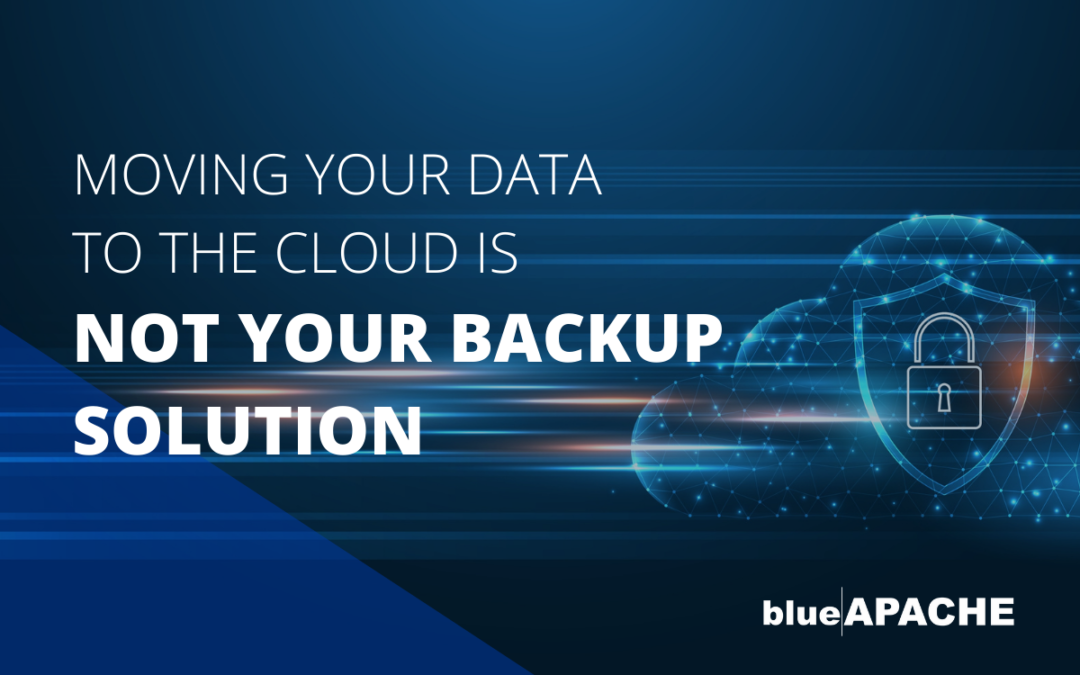As organisations migrate to the cloud at record pace, data safety is increasingly compromised. Moving to the cloud is not enough in isolation, and third-party backup services are needed to ensure data protection and operational compliance. This is particularly true for Software as a Service (SaaS) platforms, which lack the protective mechanisms required to safeguard client data.
While it may offer many benefits, moving your data to the cloud is not a backup solution. To affirm business integrity and continuity in this changing world, you need to take extra responsibility.
The benefits of the cloud
Cloud computing is an umbrella term that describes various data storage and computing services managed over the internet. It includes infrastructure as a Service (IaaS), Platform as a Service (PaaS), and Software as a Service (SaaS) models. As the dominant paradigm used in modern information systems, the cloud plays a critical role in most IT plans. Migrating to the cloud offers numerous management, scalability, and cost benefits.
Enhanced manageability
The cloud paradigm offers greater control over your infrastructure and applications. Organisations have very different demands, with cloud platforms providing efficient and flexible access to critical systems. With the cloud, people can access their entire system, from any location, at any time. This provides an agile and dynamic operational framework, and it’s also much easier to manage on a day-to-day basis.
Improved scalability
The cloud allows you to increase or decrease capacity based on demand. From seasonal fluctuations to consumption changes and business constraints, you can add or remove capacity without risking security or changing the functionality of critical systems. This is a huge benefit in the modern business landscape, which is shifting faster than ever before.
Massive cost savings
The cloud offers huge cost savings, with more fluid operational systems helping to reduce a variety of expenses. Business costs are often categorised as either capital expenditures (CAPEX) or operating expenses (OPEX). When you migrate to the cloud, you are effectively transforming IT costs from a CAPEX model to an OPEX model. You don’t have to see computing as an inflexible long-term investment — you can approach it as a day-to-day business expense.
SaaS is not necessarily a backup solution
Contrary to popular belief, SaaS models do not function as a viable backup solution. While they might have sound infrastructure and offer great services, reliable backup solutions are required. As you might expect given the name, SaaS is designed to run services and manage infrastructure. It does not necessarily secure data, and it is never the best solution available.
Why do you need to back up data?
Regardless of your business size or operational sector, data protection offers several benefits. From business continuity to operational compliance, from customer service to reputation management, backing up your data is essential to every modern-day enterprise.
- Reduce downtime — Backups help you bounce back from outages quickly. Known as business continuity, the ability to produce value and generate profits in any condition is the key to modern business success.
- Minimise impact — Data corruption or loss can have a very negative effect on your business. Backups help to minimise impacts, with key operations, critical services, and essential systems protected with integrity.
- Improve reputation — Maintaining reliable and continuous service is essential for your business reputation. Data loss can have disastrous consequences, so it’s important to be on the front foot.
Is all SaaS data automatically backed up?
SaaS may be great, but it’s not a backup solution. It is a collection of services made available over the internet, nothing more and nothing less. While all of these services involve data, and many of them involve replication, they do not function as a professional backup and/or data protection solution. Office 365 is a great example, with Microsoft’s Shared Responsibility Model putting the ball firmly in your court.
What is the Microsoft Shared Responsibility Model?
The Microsoft Shared Responsibility Model defines the responsibilities for data management and protection for Microsoft 365 subscribers.
It is structured so that:
- Microsoft provides and manages the infrastructure, security and regulatory requirements as a data processor
- The subscriber is responsible for protecting their own data
This means that in order to improve your cybersecurity stance, reduce risk and meet data retention requirements you need to have a backup solution in place to protect data generated and stored by your Outlook, Teams, SharePoint, and OneDrive subscriptions.
Start your data protection journey with blueAPACHE
Call us today to secure your business with a professional backup solution. At blueAPACHE, we can help to extend your backup, replication, and disaster recovery strategies with the power of Veeam.
To find out more, please contact us here

